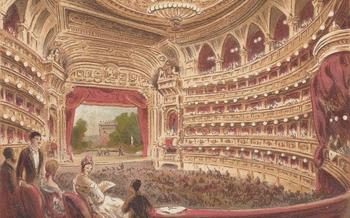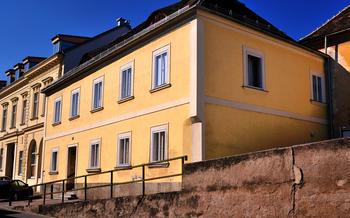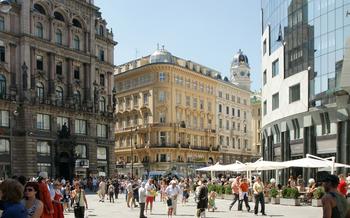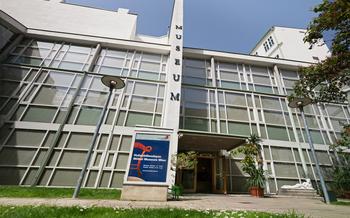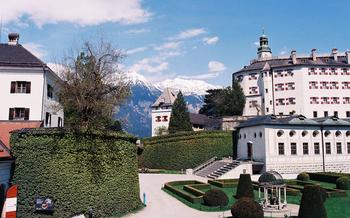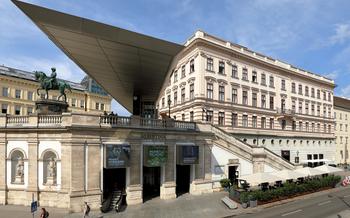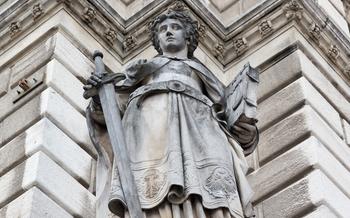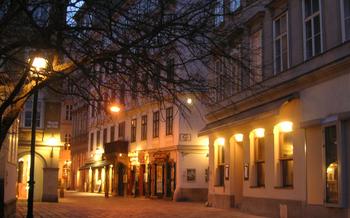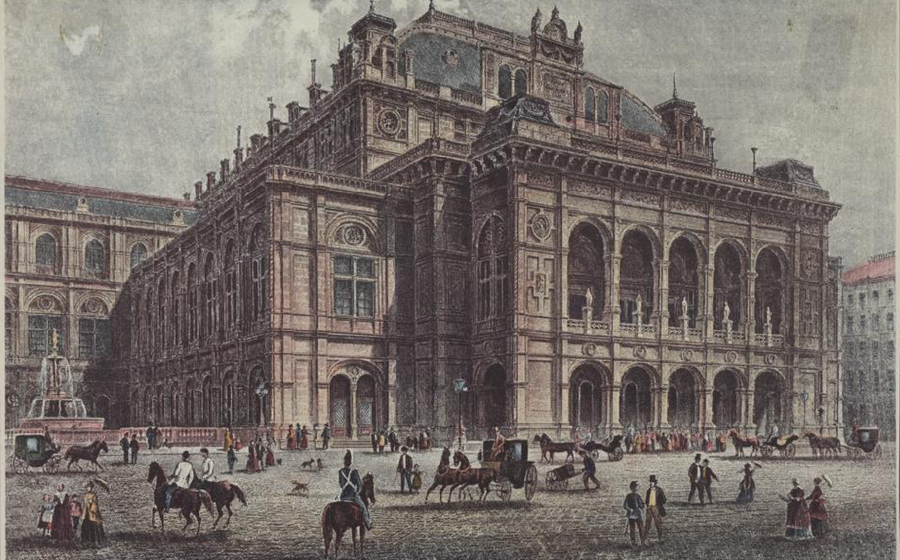
Vienna State Opera House
- Historical Significance
- Architectural Marvel
- World-Class Performances
- Acoustics and Stagecraft
- Opera Etiquette
- Iconic Productions
- Guided Tours
- Ticket Prices and Availability
- Dress Code
- Dining Options
- Public Transportation
- Nearby Attractions
- Accessibility
Historical Significance
The Vienna State Opera House, a majestic edifice steeped in history, stands as a testament to the enduring power of art and culture. Its construction, initiated in 1861, marked a significant chapter in Vienna's transformation into a global cultural hub. Designed by renowned architects August Sicard von Sicardsburg and Eduard van der Nüll, the opera house opened its doors in 1869, showcasing a stunning blend of Renaissance, Baroque, and Classical architectural styles.
Over the centuries, the Vienna State Opera House has played a pivotal role in shaping the city's cultural landscape. It has hosted countless world-renowned opera companies, orchestras, and ballet troupes, showcasing a diverse repertoire of traditional and contemporary productions. The opera house has also been graced by the presence of legendary composers, including Wolfgang Amadeus Mozart, Ludwig van Beethoven, and Richard Wagner, who have left an indelible mark on the history of opera.
The Vienna State Opera House is not merely a performance venue but a symbol of Vienna's rich cultural heritage. Its existence has fostered a vibrant opera scene in the city, attracting music enthusiasts from around the world. With its captivating performances and stunning architecture, the Vienna State Opera House continues to enchant audiences and contribute to Vienna's reputation as a global cultural capital.
Architectural Marvel
The Vienna State Opera House is a testament to the architectural genius of August Sicard von Sicardsburg and Eduard van der Nüll, who designed it in the neo-Renaissance style. Its grand facade, adorned with intricate sculptures and reliefs, captivates visitors from afar. The imposing columns, arches, and balustrades create a sense of grandeur that befits the opera house's status as one of the most prestigious cultural institutions in the world.
Inside, the opulence continues with a breathtaking auditorium that features a horseshoe-shaped design, five tiers of balconies, and a lavishly decorated ceiling. The walls are adorned with gold leaf, mirrors, and crystal chandeliers, creating a dazzling spectacle that sets the stage for unforgettable performances. The plush red velvet seats, arranged in elegant rows, offer a comfortable and immersive experience for opera enthusiasts.
The Vienna State Opera House seamlessly blends various architectural styles, from Renaissance to Baroque and Classical elements. The grand staircase, with its sweeping curves and ornate balustrades, is a masterpiece of Baroque architecture, while the auditorium's ceiling, with its intricate frescoes and allegorical figures, reflects the influence of the Renaissance. The overall effect is one of harmony and grandeur, creating a space that is both awe-inspiring and inviting.
World-Class Performances
The Vienna State Opera House is renowned for its diverse range of performances, encompassing traditional operas and ballets to contemporary productions that push the boundaries of the art form. The opera house is home to two world-renowned opera companies, the Vienna State Opera and the Vienna Volksoper, which present a staggering 300 performances each season. These companies boast a roster of exceptional singers, conductors, and directors, ensuring that every production is of the highest artistic caliber.
In addition to its opera productions, the Vienna State Opera House is also home to the Vienna State Ballet, one of the world's leading ballet companies. The ballet company's repertoire includes both classical and contemporary works, showcasing the talents of its world-class dancers.
The Vienna State Opera House's artistic reputation extends far beyond its own walls. Its productions are broadcast live around the world, allowing opera lovers from every corner of the globe to experience the magic of this extraordinary venue. The opera house has also been the site of numerous historic performances, including the world premiere of Richard Strauss's "Der Rosenkavalier" in 1911 and the farewell performance of Maria Callas in 196
Attending a performance at the Vienna State Opera House is a truly unforgettable experience. The combination of world-class artistry, stunning visuals, and the rich history of the venue creates a truly immersive and awe-inspiring atmosphere.
Acoustics and Stagecraft
The Vienna State Opera House is renowned for its exceptional acoustics, which allow for pristine sound quality and enhance the musical experience. The horseshoe-shaped auditorium, with its gently sloping tiers, ensures that every seat offers an excellent acoustic balance. The use of natural materials, such as wood and plaster, further contributes to the warm and resonant sound.
The state-of-the-art stagecraft at the Vienna State Opera House is another key factor in its reputation for excellence. The elaborate machinery allows for seamless scene changes and intricate special effects, while the innovative lighting techniques create dramatic and immersive atmospheres. The collaboration between stage directors, designers, and technical teams results in visually stunning productions that transport the audience to other worlds.
The Vienna State Opera House's commitment to artistic excellence extends to every aspect of its productions, from the acoustics and stagecraft to the performances themselves. This dedication to quality has made the opera house a beloved institution and a must-visit destination for opera lovers worldwide.
Opera Etiquette
Attending a performance at the Vienna State Opera House is not just about enjoying the music and the spectacle; it is also about observing proper etiquette to enhance the experience for yourself and others.
Punctuality is highly valued, so arrive at the opera house well in advance to allow ample time to find your seat and settle in before the performance begins.
Dress code is generally formal or semi-formal. For men, a tuxedo or dark suit is appropriate, while women can opt for an elegant dress, skirt and blouse combination, or evening gown.
During the performance, it is customary to remain silent and refrain from talking, coughing, or using electronic devices. Applause is typically reserved for the end of an aria, a scene, or the entire performance.
Booing is rare and only appropriate in cases of exceptionally poor performances or inappropriate behavior on stage. Standing ovations are customary for particularly outstanding performances.
Remember, observing proper etiquette shows respect for the performers, the audience, and the centuries-old tradition of opera.
Iconic Productions
Throughout its illustrious history, the Vienna State Opera House has witnessed countless iconic productions that have left an indelible mark on the world of opera. One such production is the 1955 staging of Richard Strauss's "Elektra," directed by Herbert von Karajan and featuring the legendary soprano Birgit Nilsson in the title role. Nilsson's portrayal of Elektra was hailed as one of the greatest performances in opera history, and her electrifying interpretation of the vengeful princess is still remembered for its intensity and vocal brilliance.
Another iconic production was the 1979 staging of Wagner's "Ring Cycle," directed by Otto Schenk and conducted by Karl Böhm. This monumental undertaking, which spanned four evenings, was a triumph of operatic storytelling, with its stunning sets, elaborate costumes, and world-class cast. The production was particularly notable for its portrayal of the god Wotan, sung by the legendary bass-baritone Kurt Moll, whose commanding presence and deep, resonant voice brought the character to life.
More recently, the Vienna State Opera House has staged a number of groundbreaking productions that have challenged traditional interpretations of opera. In 2017, director Barrie Kosky presented a daring and provocative staging of Mozart's "Don Giovanni," which explored the darker aspects of the opera's story and featured a cast of young, up-and-coming singers. The production was met with critical acclaim and sparked a lively debate about the future of opera.
These are just a few examples of the many iconic productions that have graced the stage of the Vienna State Opera House. With its commitment to artistic excellence and innovation, the opera house continues to push the boundaries of operatic performance and create unforgettable experiences for audiences around the world.
Guided Tours
To fully immerse yourself in the history and grandeur of the Vienna State Opera House, consider taking a guided tour. These tours offer a unique opportunity to go behind the scenes and learn about the intricate workings of this world-renowned venue.
Various tour options are available to cater to different interests and schedules. Standard tours provide a comprehensive overview of the opera house's history, architecture, and behind-the-scenes operations. Special interest tours focus on specific aspects, such as the stagecraft, costumes, or the history of opera in Vienna. For an even more immersive experience, backstage tours allow you to explore areas not accessible to the general public, such as the rehearsal rooms, workshops, and dressing rooms.
Tours are conducted in various languages, including English, German, French, and Italian. Advance booking is recommended, especially during peak season, to secure your spot and avoid disappointment. Check the opera house's website for tour schedules, languages offered, and booking procedures.
Whether you're a seasoned opera enthusiast or a first-time visitor, a guided tour of the Vienna State Opera House is an unforgettable experience that will provide you with a deeper appreciation for this cultural treasure.
Ticket Prices and Availability
Ticket prices at the Vienna State Opera House vary depending on the seating category and the popularity of the production. The most expensive tickets are for seats in the parterre (main floor) and the first balcony, while the cheapest tickets are for standing room in the gallery. Prices typically range from around €10 for standing room tickets to over €200 for the best seats in the house.
Tickets for popular productions, such as those featuring star singers or conductors, tend to sell out quickly, so it is advisable to book in advance. Advance booking can be done online, by phone, or in person at the box office. Last-minute tickets may also be available on the day of the performance, but these are usually only for standing room or less desirable seats.
For those on a tight budget, there are a few ways to get cheaper tickets. One option is to join the opera house's mailing list, which offers subscribers early access to tickets and occasional discounts. Another option is to purchase standing-room tickets, which are available for most performances and offer a great view of the stage at a fraction of the price of a seated ticket.
Dress Code
The Vienna State Opera House maintains a formal dress code for its performances, reflecting the prestigious atmosphere and the respect accorded to the art form. For men, a tuxedo or dark suit is the preferred attire, accompanied by a tie or bow tie. Women are expected to wear evening gowns, cocktail dresses, or elegant pantsuits. The aim is to create a sense of occasion and elevate the experience for all attendees.
Adhering to the dress code demonstrates respect for the performers, the venue, and fellow audience members. It also enhances the overall ambiance of the opera house, allowing everyone to fully immerse themselves in the magic of the performance. While the dress code may seem strict, it contributes to the unique and unforgettable experience that the Vienna State Opera House offers to its visitors.
Dining Options
For a memorable dining experience before or after your visit to the Vienna State Opera House, there are numerous culinary gems to explore in the surrounding area. Indulge in traditional Viennese cuisine at Gastwirtschaft Wratschko, known for its cozy atmosphere and delicious schnitzel. For a more contemporary twist, try Das Loft, which offers creative dishes and panoramic city views. For a truly special occasion, reserve a table at Steirereck, a Michelin-starred restaurant celebrated for its innovative Austrian cuisine and elegant ambiance. No matter your preference, the culinary scene near the Vienna State Opera House promises a delightful experience to complement your evening at the opera.
Public Transportation
The Vienna State Opera House is conveniently located in the heart of Vienna, making it easily accessible by public transportation. The nearest metro station is Karlsplatz, which is served by lines U1, U2, and U4. From there, it is just a short walk to the opera house. Several bus lines also stop nearby, including the 1A, 2A, 3A, and 59A. For those who prefer trams, lines 1, 2, and D all pass close to the opera house.
With Vienna's efficient public transportation system, you can easily plan your journey to the opera house using the Wiener Linien website or app. Tickets can be purchased at metro stations, tram stops, and newsstands, or you can opt for the convenience of the WienMobil app, which allows you to purchase and validate tickets using your smartphone.
Nearby Attractions
The Vienna State Opera House is strategically situated in the heart of Vienna, surrounded by an array of cultural attractions that enhance the allure of a visit to this iconic venue. Within easy walking distance, visitors can immerse themselves in the grandeur of the Hofburg Palace, the former imperial residence of the Habsburg dynasty. This sprawling complex houses a multitude of museums, including the Sisi Museum, dedicated to the beloved Empress Elisabeth, and the Imperial Apartments, offering a glimpse into the opulent lifestyle of the imperial family.
Just across the Ringstraße, the Kunsthistorisches Museum beckons with its impressive collection of art and artifacts, spanning from ancient Egyptian treasures to masterpieces by Renaissance and Baroque masters. Highlights include works by Bruegel the Elder, Titian, and Caravaggio. For a serene respite, stroll through the picturesque Volksgarten, a delightful park adorned with statues, fountains, and rose gardens. This enchanting green space offers a tranquil oasis amidst the vibrant city center.
Combining a visit to the Vienna State Opera House with these nearby attractions allows travelers to create a comprehensive cultural itinerary, delving into the rich history and vibrant arts scene of Vienna. Whether you choose to explore the imperial grandeur of the Hofburg Palace, admire the artistic treasures of the Kunsthistorisches Museum, or simply relax in the serene ambiance of the Volksgarten, the surrounding area offers a myriad of opportunities to enrich your experience in Vienna.
Accessibility
The Vienna State Opera House is committed to providing an inclusive and accessible environment for all visitors. The opera house features wheelchair ramps, elevators, and accessible seating areas to ensure that everyone can enjoy performances regardless of their abilities. Additionally, the opera house offers audio description services for visually impaired patrons and sign language interpretation for deaf and hard of hearing patrons. The staff at the opera house is also trained to assist visitors with disabilities and provide any necessary assistance.
Sharing personal experiences or anecdotes related to accessibility at the opera house can help to shed light on the importance of inclusivity and the efforts made to ensure that everyone can enjoy the magic of opera. By highlighting the accessible features and services available, you can encourage readers to visit the Vienna State Opera House knowing that they will be welcomed and accommodated.
